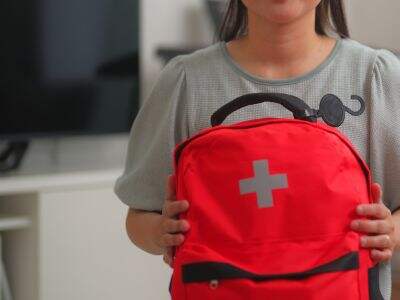If a person gets a chest injury, it can lead to critical complications that may affect breathing and even cause a lung collapse. This is a very serious injury and can quickly become life-threatening if not treated immediately. That’s why chest seals are unique tools for managing these types of injuries. They are crucial for providing immediate medical assistance to the injured individual.
Chest seals are sterile dressings that cover the wound on the chest to prevent air entering. Sometimes the air goes into a wound and it worsens the injury etc. Chest Seal mainly fall into two categories: vented and unvented. Vented chest seals those are used for an open wound where air can collect in a for example, tension pneumothorax, very serious complication, and some of them, you know, vented. Conversely, when a chest seal is unvented, it is for a closed wound. These clinically are when air gets stuck in the chest and forward on another serious problem called pneumothorax.
How to Prevent Problems with Chest Seals
Pneumothorax occurs when air enters the channel that separates the lung from the chest wall. This can happen for different reasons like accidents, falls, or getting hit. When air enters this space, it can prevent the body from being able to breathe properly and can even lead to collapsed lungs. Now, this is a very life-threatening condition that could become fatal if not taken care of immediately.
Tension pneumothorax is a more severe form of pneumothorax. This happens when air gets into the chest but cannot escape. This creates escalating pressure in the chest and makes it extremely difficult for the lungs to function properly. And when that happens, it can even compress the heart, preventing blood from circulating properly. Death can occur if tension pneumothorax is not quickly treated.
That’s why chest seals are critical. They assist in the treatment of pneumothorax and tension pneumothorax If you apply a chest seal to the wound, it serves as an air-tight barrier to prevent air from entering the chest and creating further complications. This keeps the individual in the stable condition and minimizes the possibility of further injury occurring.
What Are Chest Seals and How Do They Work
It may seem painful and hard to use a chest seal, but it is important to learn how to do it properly. Here’s a step-by-step guide that demonstrates how to apply a chest seal correctly:
Examine the wound: Check the visual on the wound, remove clothing of the victim to do this. Then use a special solution to clean the area outside of the wound to remove any germs.
Clean the Surroundings: Ensure the surrounding of the wound is clean from dirt or anything that should not be there. All this is especially important to avoid infection.
Step 1: Apply the Chest Seal: Take the chest seal and place it over the wound. Ensure that it is covering everything properly and is sealing inside the area from outside air.
Inspection for Leaks: Once you apply the chest seal, do an inspection to see if there are any leaks or gaps. Make sure it is sealed tight so that no air can escape.
Release Air if Necessary: If you utilize a vented chest seal, you may need to create a small hole in it to allow any excess air trapped within to escape.
Use a Dressing: Once the chest seal is applied cover it with a clean dressing/bandage to keep it in place
Monitor the Victim: Watch their breathing and their vital signs. In the meantime, you should watch for any changes while waiting for further medical assistance if necessary.
Why Chest Seals Are Important
Chest seals are great pieces of equipment that should be in every first aid kit, whether it be your home or hospital. They are simple to operate, relatively inexpensive and potentially life-saving. It is especially important for outdoor enthusiasts − like hikers and campers − and those who work in risky environments to be sure at least chest seal kit are present in first aid kits. In an emergency, being ready can mean the world of difference.
Why are Chest Seals Worth a Life?
Chest seals are just one more thing that is critical for the treatment of chest injuries, in both civilian and military environments. On the battlefield, with bullets and explosions, chest injuries may be more common. Chest seals assist physicians and medics to render immediate medical treatment to wounded soldiers. That initial care can mean the difference between life and death, and that’s why it is vital to have chest seals on hand.
Chest seals: A critically important device for the management of chest trauma. They are simple to use, inexpensive and can actually save lives. Understanding the function of chest seals, their role in avoiding serious complications, and their proper application can prepare us to offer the best possible immediate medical care to our patients. If you have a first aid kit, you should have Medresq chest seals in it as they make high-quality and reliable seals.
 EN
EN
 FR
FR
 DE
DE
 IT
IT
 JA
JA
 KO
KO
 RU
RU
 ES
ES
 AR
AR
 BG
BG
 HR
HR
 DA
DA
 NL
NL
 FI
FI
 EL
EL
 NO
NO
 PL
PL
 PT
PT
 RO
RO
 SV
SV
 TL
TL
 ID
ID
 SR
SR
 UK
UK
 VI
VI
 SQ
SQ
 TH
TH
 TR
TR
 AF
AF
 MS
MS
 CY
CY
 IS
IS
 HY
HY
 AZ
AZ
 KA
KA
 MN
MN
 MY
MY
 KK
KK
 UZ
UZ
 CS
CS



